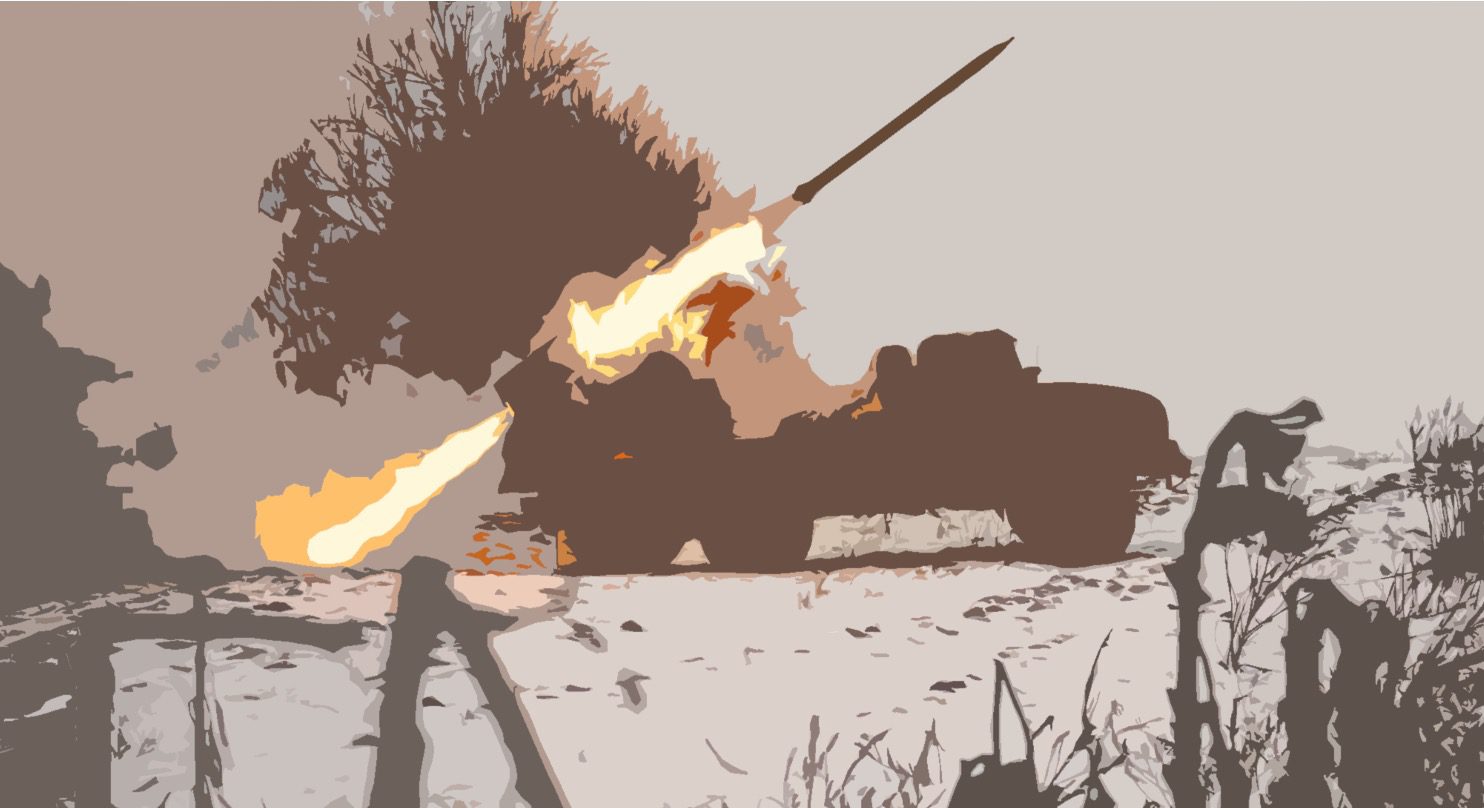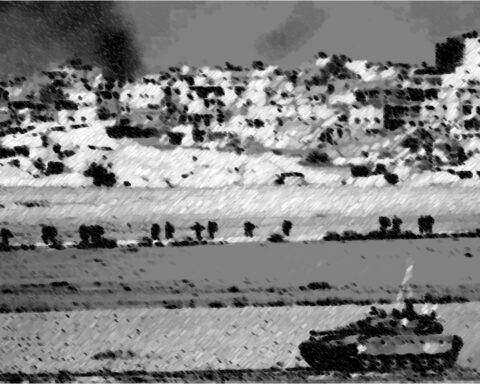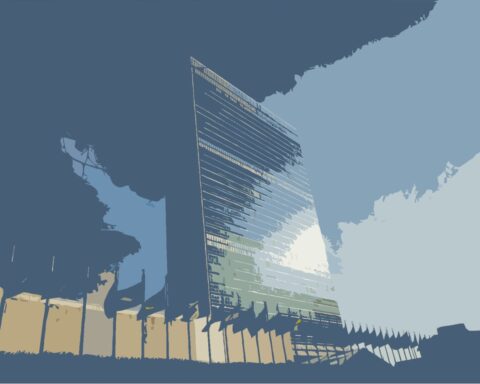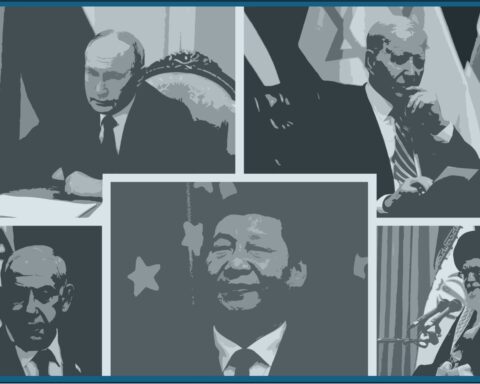During the past winter, the prominent issue on the Ukrainian front was Bakhmut. After a long struggle by the Russians, this town was captured by the Wagner group, a private military company led by Prigozhin, who was later involved in a problematic incident and killed in a staged plane crash. With the arrival of spring, we were preoccupied with news of Ukraine’s counter-offensives. Frankly, like experts following this matter, I also stated that Ukraine would not be successful in this counter-attack. The Ukrainian army had not yet reached the necessary strength for such a counter-offensive. Although the Russian army was not in a great condition either, it made the best possible preparations under the circumstances. Throughout the winter, while Wagner was engaging the Ukrainians in Bakhmut, the Russians completed classic trench defense preparations along the Dnieper River and in three lines, reminiscent of World War II tactics. Meanwhile, we witnessed Ukraine conducting some asymmetric attacks in Moscow, Sevastopol, and the Black Sea, mainly involving drone attacks from the sea and air.
The USA and its allies continued their support for Ukraine. The most notable military support, perhaps indicative of a transformation into a NATO-like army, included modern Western-type weapon systems, ammunition, and the initiation of the F-16 fighter jet project. President Zelensky made speeches everywhere and at every opportunity, asking for more support. As expected, throughout the spring and summer, the Ukrainian army failed to penetrate the trenches and minefields prepared by the Russians. During this period, our assessments were centered on the stagnation of the war, which provided advantages for both the USA and Russia to exploit.
In response to Hamas’ October 7th attack, the U.S.’s decision to send a significant military force to the Middle East was initially viewed as follows: There is a necessary natural stagnation on the Ukraine front, which both the U.S. and Russia are exploiting to their advantage.
As we approach the end of 2023, our focus has been primarily on Gaza and Israel. With only a few days left until 2024, the world has once again turned its attention to the Ukrainian front. Articles by some experts have been published, and various writings on Russia’s economy have begun to appear in think tanks and global media. President Zelensky’s trip to America took place, reminding us of the aid the U.S. has provided and could provide to Ukraine, ultimately admitting that there is a stagnation at the front. The key question now is whether the political will in both the U.S. and Europe to continue military and economic support to Ukraine is starting to wane, whether a new strategy will be implemented, how the Ukrainian people will adapt to this new strategy, how the Kremlin will approach it, and whether all these perspectives can be considered in preparation for a ceasefire.
From the beginning, Ukrainians have demanded the complete withdrawal of Russian forces from their territory and have put this forward as the ultimate goal of the war, referred to as Ukraine’s territorial integrity. Russia, relying on the de facto situation, declared the annexation of the territories in Donetsk, Luhansk, Kherson, Zaporizhia, and Crimea, insisting on keeping these regions. However, Russia’s condition that Ukraine should not join NATO still stands. NATO seems content with integrating Ukraine in its current state (with approximately 80% of its territory).
The Biden administration in the U.S., instead of providing more financial support to Ukraine, thinks the current situation might be sufficient. It appears that this war has already achieved many of the U.S.’s goals: NATO has expanded, Europe has been consolidated according to the U.S. strategy, and has abandoned projects with Russia. Russia has been economically and politically weakened, paving the way for global armament. The U.S. wanted to limit Russia’s capabilities in the Black Sea, which seems sufficiently achieved. During this time, the U.S. might also be considering Russia’s reduced influence in the Middle East and Africa. The potential NATO membership of Sweden and Finland along the Arctic Circle could be seen as a significant advantage for the U.S., aiding its focus on the Indo-Pacific region. The U.S. might rely on economic analyses to persuade Russia on contentious issues. Economic power is arguably the most significant global leverage the U.S. can employ. Perhaps, the ongoing analysis of Russia’s economy and defense budget by U.S. and UK think tanks and Federal Reserve employees is for this reason.
This war has also allowed for the rise of unexpected countries, with Russia purchasing weapons and military equipment from North Korea and Iran. These developments might necessitate new global measures for U.S. interests. Economically, Russia has increased its ability to trade with its own currency, which is not a favorable development for the Federal Reserve. Consequently, the U.S. might start considering additional measures to control these emerging and challenging alternatives in the economy.
At the start of the war, Vladimir Putin and Xi Jinping met in Beijing and reached an agreement. As the war progresses, China will likely develop the Russia-China partnership to its advantage, a possibility that cannot be ignored.
It’s important to remember that 2024 is an election year for both the U.S. and Russia. This year, leaders will need to convey to their voters that they have achieved victory and have managed to improve their economies. At least one thing is clear: as the elections approach in the U.S., the Republican side, supporters of former President Trump, are intensifying their criticisms to weaken the Democrats. They have even started to show a red card to Biden in Congress regarding financial support for Ukraine. The past warm relations between Trump and Putin are a topic of discussion in the U.S. elections, not just for Republicans, but also for anti-war groups.
From my perspective, let me explain with a question: Just before Russia’s invasion attempt of Ukraine, Biden and Putin couldn’t reach an agreement in Geneva. How different is their situation now, under these evolving conditions? In other words, if a new Geneva summit were to happen, have the American and Russian Presidents closed enough gaps to reach an agreement? I’m not looking at what Ukraine and Zelensky say. The real political issue should be clarified over this U.S.-Russia agreement.
Given these circumstances, we still need to review the military-strategic aspects of the situation. Who has the more critical strategic perspective? If permanent ceasefire negotiations and a peace conference are to be convened, this is a matter to be considered from the perspective of the conflict zone and its parties. When parties sit at the table, they will negotiate according to their strategic gains. But someone needs to initiate traffic for ceasefire negotiations. Who will start and manage a highly probable successful traffic? At least initially, a proposal from one side should emerge.
The fact is, Russia has lost a significant number of soldiers and military equipment in this war, not to mention the economic losses. So, how much longer can Russia sustain this state of war? If the war is intense, Russia’s losses will be high. If the pace of the war remains slow, as it has been recently, Russia might find the time to complete the necessary military replenishments. However, the current economic challenges will continue. Due to the continuing sanctions process by the U.S. and its allies, this could be a binding factor for Russia. How can U.S. support for Ukraine evolve? If the war is intense, the U.S. will need to provide substantial support to Ukraine, which is significant in terms of the U.S. economy and priorities in global balances. Conversely, a slow pace of war might produce a result favorable to Russia, so this may not be preferred. Russia and the U.S. must still be evaluating the situation in this way.
Surprises can occur in wars, but they are seen as more tactical than strategic. By developing opportunities for situational superiority at various levels, pressure can be increased on the opposing side. Still, the U.S. might be waiting for a change in the Kremlin’s leadership. However, this expectation is only a speculation or a target being worked on, as it cannot have a significant impact in serious calculations. Therefore, realistic calculations based on ordinary conditions are valid. In this situation, the U.S. should take the initiative and gradually start working towards a potential negotiation table.
Let’s return to the front and the balance of power of the warring parties. Even if the U.S. and its allies provide substantial military support to Ukraine for a high-intensity war, can Russia afford this? Russia’s ability to use its military-strategic depth is well-known. As seen last winter, its future measures would involve the same precautions: trenches and minefields, constructing dozens of parallel lines to lean as far back as possible. This means continuous support of weapons and ammunition by the U.S. and its allies. Moreover, the Kremlin will repeatedly threaten to press the nuclear button. They will conduct exercises in Eastern Europe and the North Sea. Europe might become more exhausted with this tense tempo and could object to the U.S.
But most importantly, in such a case, there also needs to be an accounting of Ukrainian soldier casualties. In a high-paced war, and even if Ukraine has to be the attacking side to achieve territorial integrity, it means that Ukraine must create its own source of soldiers. Even if weapons and ammunition can be supplied from the West, the fact that the soldiers fighting are from Ukraine itself makes the discussion of how sustainable this war is for Ukraine valid.
Ukraine does not have an advantage in naval and air power. When the U.S. started the project to give F-16 fleets to Ukraine, many people thought that the planes were ready and Ukraine’s air power could be immediately strengthened. This will not be the case; we are talking about a project that will take at least 3-5 years. On the other hand, the UK announced plans to strengthen Ukraine’s Black Sea navy. It was said that two mine sweepers would be donated from Norway. These types of projects are not enough to overcome Russia’s naval power capacity in the Black Sea. Both the difficulties are too many and international issues need to be added to this.
Ukraine, and of course its army, are so tied up that they are in a situation where they have to do whatever the U.S. says. This is a description of the difficult conditions created by dependence on another sovereign power in a state of war, rather than relying on one’s own strength. Let’s say the U.S. announces that it can no longer provide military support to Ukraine, what can Zelensky do? Let’s say a Republican sides the U.S. presidential elections and says that policies will change, what does this mean for Ukraine? This situation means that there is a big problem for Ukraine, and such a political situation terribly affects the realities on the front.
But that’s how the situation developed! If the invasion was launched, some military mistakes were made, and if there were heavy losses; the fact that put the Ukrainian army in difficulty today was the option of waging a war based on military aid. Putin must have taken this into account at some stage. How many more years can a Ukrainian army, tied to the support of the West, continue to fight? Let’s say the war continues, how many more years will it take to reclaim the territories annexed by Russia? Even if Ukraine has the will to continue, will human resources and financial structure be sufficient? But if a ceasefire is reached, other opportunities can be created under the leadership of the United Nations and the Organization for Security and Cooperation in Europe, as well as the West, and Ukraine can be rebuilt.
Putin must be aware of these realities, and if the U.S. (or another country, name) starts approaching them for a ceasefire, the Kremlin can keep its bargaining margin at the highest levels. The most important and real issue we face today is something like this!
The situation has come to this point, and if the U.S. (and therefore Ukraine) seems to be stepping back, how far back can it go? As I said at the beginning, this is a matter of a new Geneva margin. What can Biden do in this regard until the elections? Little. Even though they want to bring up issues like the jailed opposition figure Navalny in the last week, this is not a good exit route for America. Then, from my point of view, we need to look after the U.S. elections.
Joe Biden is not going to declare war on Russia today! And his main target is China! The method applied by the U.S. is called Contactless War. How much does such a war earn? Now, while the U.S. and Russia are entangled in a political web, what awaits Ukraine, even Zelensky doesn’t know. From my point of view, the U.S. policy has come face to face with the U.S.’s Contactless War method, and Russia can enjoy the cream of this.












